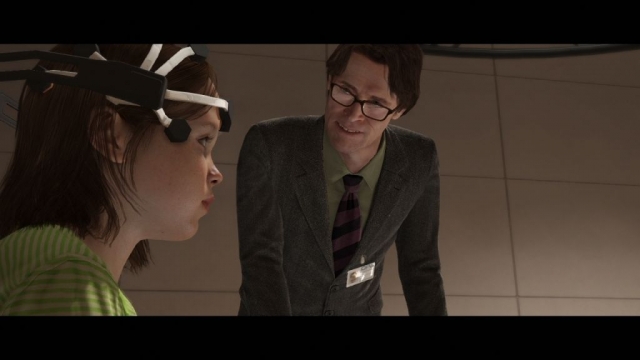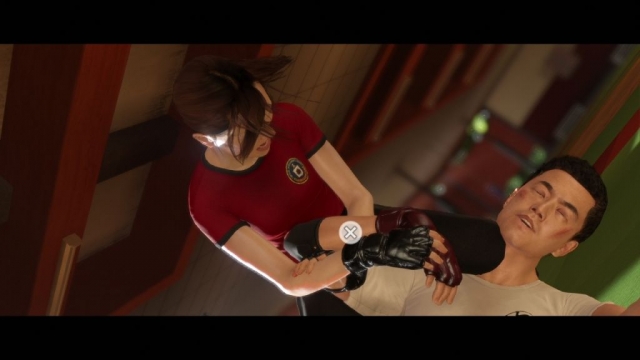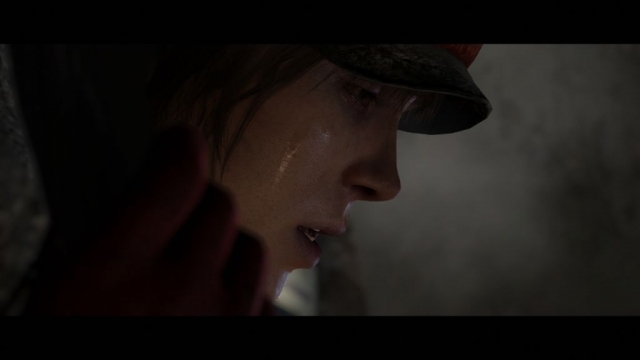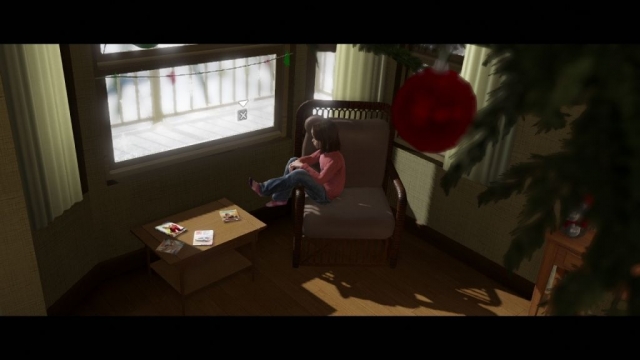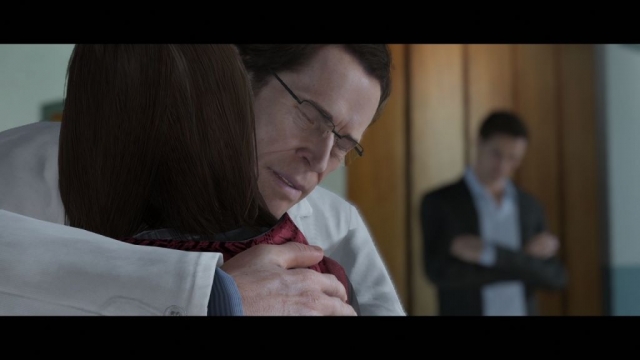Beyond: Two Souls

Beyond: Two Souls follows up on Quantic Dream’s brilliant Heavy Rain with a similarly-immersive interactive story-heavy adventure. Like that game, it is a blending of films with an almost point and click adventure gameplay style given that you’ve got branching paths and sometimes-minimal interactivity with the gameplay. If HR’s movie-heavy style bugged you, you’ll be glad to know that Beyond is far more interactive – with new stealth and shooting mechanics making it feel like a much deeper experience.
Beyond focuses on Jodie’s entire life and jumps around the timeline in a way that has been quite divisive among players. Some feel it completely ruins the flow, while others don’t mind and some adore it. I’m in the “adore it” camp myself because the fragments all wind up forming a cohesive narrative. I liken it to seeing a jigsaw puzzle completed on the box (and if you’re a young reader, jigsaw puzzles were these things that you assembled in a box to form a photo – there’s at least one free app for them on your phone now). You start off with just enough knowledge to know that Jodie’s a complicated character due to her spirit entity Aiden – but have to fill in the blanks with the game as a whole.
Aiden acts as both a help and hindrance to her throughout her life – sometimes acting like a shield, and also becoming jealous at the mere idea of her dating, or doing anything that could involve her not needing Aiden. Triangle brings Aiden out of hiding and you can interact with the world around them in many ways. If you’d like him be a bit more of a passive presence, you can by just not having him do a lot in the real-world. There are times when you can choose to either be kind or cruel and it’s up to you to determine how Aiden acts. Early on, there’s a scene when a young Jodie is asked to use Aiden just to make a woman aware of it in the real world. You can choose to either do a few things, or destroy the entire room she’s in and scare the daylights out of her. She didn’t do anything to either Jodie or Aiden, so logically it would seem cruel to do anything excessive. I didn’t, but figured it made a bit of sense to go overboard early on and then reign it in later.
Then things got crazy with a birthday party that Jodie is forced to go to for a kid and her friends that she doesn’t know and she is bullied something fierce. Here, going for the light touch wouldn’t make sense. Aiden is more than anything else, Jodie’s protector and these people wrong Jodie in ways that deserve severe consequences. You can choose to either be passive and make a cake explode or set the entire house ablaze and attempt to murder everyone – the latter is far more satisfying, but also makes you feel a bit sick inside for doing it since they’re basically just a bunch of teens in that “we’ll post photos of us WITH A BEER and be TOTALLY COOL! OMG WEED IS AWESOME! (insert 4:20 joke here)” phase of their lives. Aiden becomes an extension of Jodie and how he acts reflects on her – if he does good, she’s hailed as a hero, and if he acts like a psycho, she’s viewed as a witch – only without burning at the stake.
While this is definitely Jodie’s game, Willem Dafoe’s Nathan Dawkins character is also a major part of it – although going with an Ellie/Joel comparison doesn’t quite fit since he’s almost more of a side character in terms of screentime compared to her. 90% of the time, you’ll be playing as her, with brief playable sections as others when you’re Aiden and can inhabit other people and use them to thin out enemies or just accomplish a simple change on a computer. Nathan’s character clearly has a father figure vibe to him throughout the game – something that makes a lot of sense when you’re told fairly early on that he’s lost his wife and daughter, but the connection he feels to Jodie crystalizes more much later with a scene that I won’t spoil, but is one of the most moving in the entire game. Their surrogate father-daughter bond is strengthened by a foster family Jodie’s placed with where there’s a strong motherly influence, but the father is nothing less than a prick during the best of times, and so Nathan is relied upon more than he theoretically should be to fill that void for her.
Cole is Nathan’s assistant and acts as kind of a 1-A father figure as well – maybe more of a big brother. He clearly adores Jodie and refers to her as his Little Princess constantly. It starts as just a way to make her feel better about putting a giant contraption on her head and likening it a crown, but becomes a term of endearment throughout the story. He actually gets about as much screentime as Nathan, but has a slightly less-developed character. We aren’t told much about him or his past, but it’s easy to gleam that he’s a caring individual who loves Jodie and wants to see her happy and not full of teen angst with a guitar in her hands and blue dye shrewn about her hair. The latter getup remains one of the outright funniest scenes in the game.
Jodie goes from being a tiny little girl to a young adult, and over the course of that adventure is taken away from her surrogate family to become a test subject, and is then torn from them to take part in CIA training early on in the narrative. She’s a fragile person who’s never really been able to form rock-solid relationships with anyone on a friendly level – let alone anything beyond that, and it shakes her to the core when she has to do anything that harms anyone who doesn’t deserve it. She values every good person who comes into her life, and it leads to great emotional turmoil at times. Fortunately, those times also lead to some of the game’s most exciting sequences as you’ve got stealth and shooting elements that work perfectly for people who aren’t very good at either.
These sections are more timing-sensitive than anything, but feel more involved than regular QTEs – which you’ll be doing a lot of in the game. There’s more to them here than in something like God of War, and basically resembling Heavy Rain’s use of face and trigger buttons, along with some stick and Sixaxis controller movement, to simulate actions. The Sixaxis movement is used perfectly for things like bigger jumps and actually makes the functionality seem worthwhile. Stealth is essentially a streamlined version of what you’ve come to expect from close-quarters combat in Metal Gear Solid, and works well at making you hide in the shadows to get used to the idea of moving around stealthily without inducing the panic that a stealth game can induce for folks with an itchier trigger finger.
Here, hiding is basically a quick bridge to more action, and it’s a great balance because the stealth combat still feels satisfying. Similarly, the QTEs make you feel like you’ve accomplished something because you do have to think logically about where to move the stick to either block a blow or evade an attack. Doing it wrong can lead to you taking more damage, or simply being saved by someone else a bit faster. I wasn’t able to encounter a total fail state, but did feel regret for causing a few more cuts to appear on Jodie, as they’re quite graphic at times and do get across the danger she’s in at all times in combat.
Ellen Page’s involvement in this and Ellie from The Last of Us heavily-resembling her have seemingly led to people expecting this to basically be that with a supernatural vibe, and it’s an unfair comparison in both cases. The latter was clearly a third-person shooter with a strong narrative and heavily-cinematic look to it, while this is a cinematic experience with an even stronger and more focused narrative, with some shooting, stealth, and QTEs mixed in. They’re two completely different kinds of games, yet each close out the PS3 strongly and make the system a must-buy at a time when many have mentally checked out on the generation. Much like how God of War II amazed people on the PS3, these two games make use of years of knowledge on how Sony’s hardware works and how to get the most out of it.
Beyond makes use of this knowledge to provide texture work that is better than anything seen before on the platform. Wet clothing looks better here than in the Uncharted games, and wounds actually have a bit of depth to them as well. Individual wrinkles and pores can be seen in close-up and make the characters and the world they inhabit seem even more real – especially when combined with textured tears running down cheeks or rain soaking the environment. The animation is mostly superb and the lighting effects are the best I’ve ever seen in a game so far. It manages to surpass The Last of Us in terms of sheer visual splendor, and uses more lifelike animation. Much like how that game’s body language sold the reality of the world instantly with Joel’s daughter’s movements feeling lifelike, this does that throughout the entire adventure thanks to extensive motion capture. Of course, it is worth noting that Beyond is better-looking as a whole, but is a less interactive experience, so it may be a bit less taxing in terms of things that need to be computed at one time – so it’s not a 1:1 comparison of like games within the same genre. Facial animation is very lifelike and expressions and body language tell the story about as well as the dialogue.
Young Jodie really benefits from this because you see her move around as a kid as a regular, happy little girl playing in a snowball fight to later sloshing through the snow as an adult. Like both Journey and The Last of Us, winter provides some of the game’s best animations. Nathan’s story is less told through body language and more through facial expressions. You can tell he’s crushed with the death of his family through his face, but can also see the joy in his face and gleam in his eye when Jodie comes into his life. There’s a hint of insanity to him throughout that is also sold through the face just due to the extremes he sometimes goes through. He’s a complicated character, but also one of the easiest to understand and sympathize with given what he’s been through.
While the experience is simply incredible 99% of the time, there are brief issues with things like the camera angle going nuts, or animations resetting awkwardly that take you out of the reality of things. The former is especially evident when you’re getting ready for a date and the camera just changes on you out of nowhere and goes from behind you to in front of you – but you still need to move to a certain area before you that you now can’t see and the controls seem inverted to suit that, but it takes some time to figure that out. The latter crops up when you’re climbing through a window and have to hold L1, then R1 to go through smoothly – not doing let’s say R1 properly will result in things just resetting out of nowhere – no legs moving back to their original position organically. They just kind of teleport back into place and it comes off as silly.
Given that the game delves into the supernatural, it may seem odd to say that breaks the reality, but the supernatural is brought about and explained logically while this isn’t. It’s just a small hitch that can hopefully be fixed up with a minor patch. If not, then it isn’t a big issue, just one that stands out. I also experienced one freezing glitch during the game’s last chapter when I was replaying it to get more endings and learned that it would’ve been a great idea to just save as I went because I then had to redo that section from the beginning. Like the Last of Us, you’ll want to replay at least a few chapters to see different perspectives on things since there are scenarios you’ll inevitably miss the first time around.
Beyond isn’t just a joy to play and look at, but also to hear. The voice work is uniformly great and lacks any moments that take you out of it like Heavy Rain had. There are no “Shaun. SHAU-N, SHAUNNN!” moments here – everything is played straight throughout the adventure and even the branching paths result in believable acting throughout every scenario I tried. The soundtrack is amazing and varies between rock to softer music depending on the tone of the scenario you’re in. The game’s main theme is beautiful and made me wish I’d bought the steelbook to get the soundtrack download as well, since it isn’t yet on the PSN store on its own. The sound effect work is quite realistic and gets across whatever the action is reasonably well. Knife wounds sound vile with clothing being ripped through, and it’s worth noting that while is a violent M-rated game, there’s far more cursing than bloodshed and all of the latter is at least handled realistically and never feels exploitative.
Beyond: Two Souls is one of the PS3’s finest games and is neck-and-neck with The Last of Us for telling the best story and having the best graphics of the console generation. It builds on the gameplay and storytelling foundation laid before it with Heavy Rain while dealing with supernatural things far better than Indigo Prophecy/Fahrenheit ever did and is the best game Quantic Dream has developed yet. If you’ve enjoyed anything QD has put out yet, buy this as soon as you can to partake in a generation-defining game that deserves to be enjoyed by all, but will likely be relegated to a somewhat popular sleeper hit due to its release so close to the launch of next-gen hardware.
It would be great for everyone involved – players and devs alike, if this got its just due now. Like The Last of Us, it’s well worth $60 not just presently, but for the hopeful next gen remake since the games clearly max out the hardware and it’s impossible to play them and not want to see them look even better in the back of your mind with the PS4’s power behind them. As things stand, both are must-haves and essential games to add to your collection – Beyond sports some nice extras as well that show players just how much passion went into the project from not only the creators, but the cast as well. Plus, the cast gets to sit in a giant throne, and it’s almost worth $60 just to watch Willem make crazy faces and poses on this thing.
Reviewed By: Jeremy Peeples
Publisher: Sony Computer Entertainment
Rating: 97%
——————————————————————————–
This review is based on a retail copy of Beyond: Two Souls for the PlayStation 3 provided by Sony Computer Entertainment.
 Game Over Online
Game Over Online